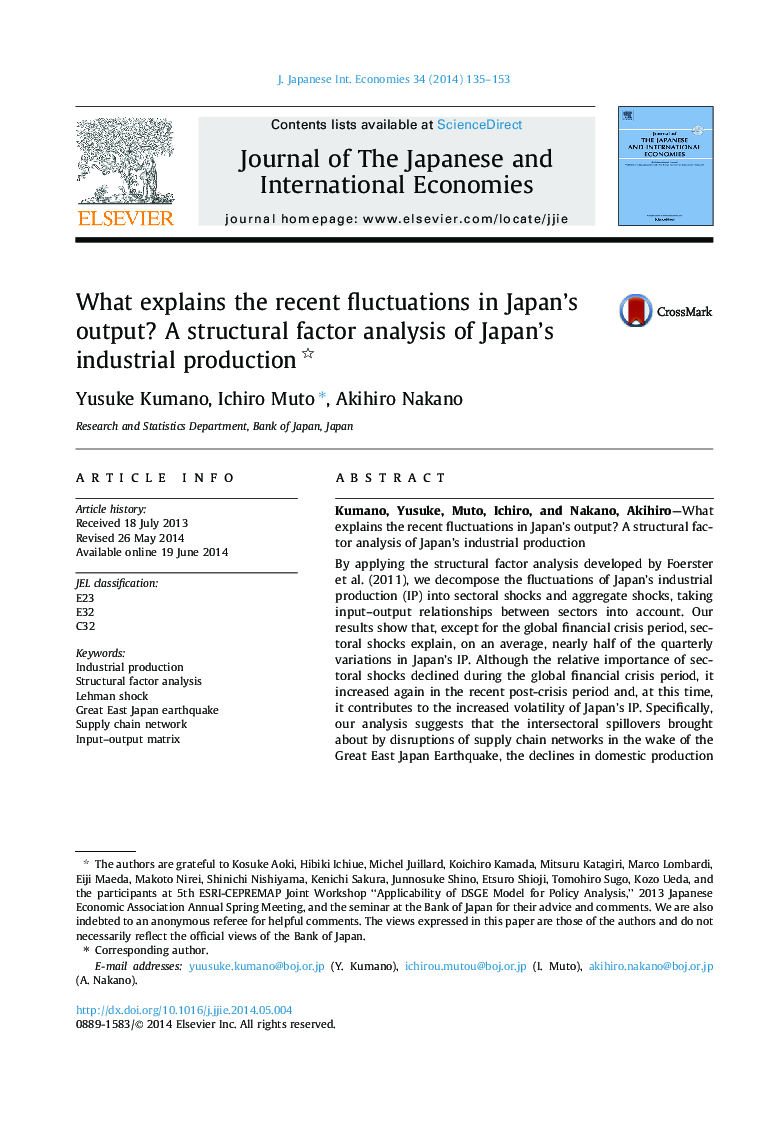| Article ID | Journal | Published Year | Pages | File Type |
|---|---|---|---|---|
| 964487 | Journal of the Japanese and International Economies | 2014 | 19 Pages |
•We examine the sources of fluctuations in Japan’s industrial production.•We apply a structural factor analysis taking into account sectoral linkages.•Sectoral shocks play important roles, except for the global financial crisis period.•Sectoral shocks recently contribute to the increased volatility of Japan’s output.•Negative intersectoral spillovers arose in the period of great earthquake.
By applying the structural factor analysis developed by Foerster et al. (2011), we decompose the fluctuations of Japan’s industrial production (IP) into sectoral shocks and aggregate shocks, taking input–output relationships between sectors into account. Our results show that, except for the global financial crisis period, sectoral shocks explain, on an average, nearly half of the quarterly variations in Japan’s IP. Although the relative importance of sectoral shocks declined during the global financial crisis period, it increased again in the recent post-crisis period and, at this time, it contributes to the increased volatility of Japan’s IP. Specifically, our analysis suggests that the intersectoral spillovers brought about by disruptions of supply chain networks in the wake of the Great East Japan Earthquake, the declines in domestic production (or production capacity) in some sectors, as a result of a deterioration in global competitiveness, and a shift to overseas production have contributed to the recent increase in fluctuations of Japan’s IP.
